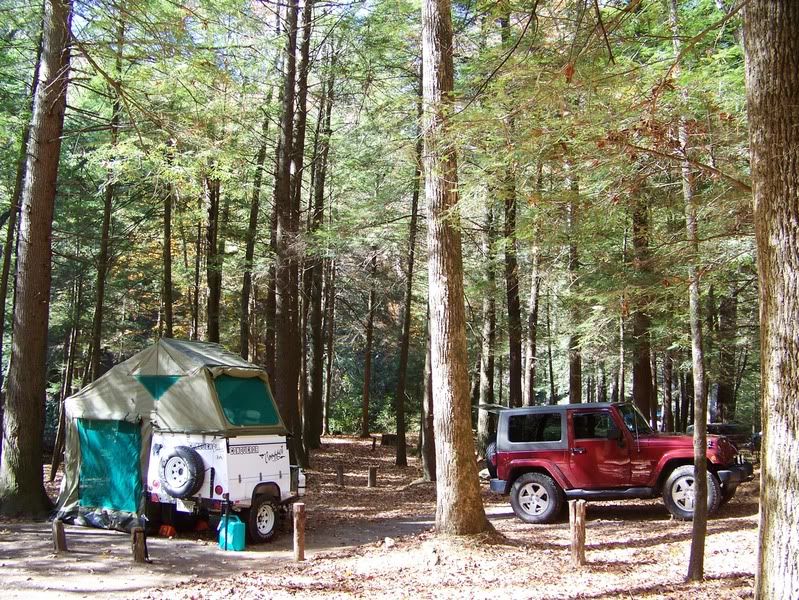Martyn
Supporting Sponsor, Overland Certified OC0018
You are mistaken. Catalytic heaters produce only heat, water, and carbon dioxide, not carbon monoxide.
I have both a Buddy and a Big Buddy and use one to heat my travel trailer when I'm boondocking. They have a low oxygen sensor which shuts them down if the oxygen level in the air drops too low. Even inside a closed trailer it has never shut down, because there is enough air exchange to maintain normal oxygen levels.
I also have a carbon monoxide alarm that sits about three feet from the heater. After a full night of running, when I get up in the morning the CO level is still zero ppm. I know the CO sensor is very sensitive because I have had it sound after a short time of using a propane lantern inside, and it was showing above 300 ppm CO.
They also have a very sensitive motion sensor of some kind. On many occasions I have had mine go out if I moved it while it was on. It's really annoying when I accidentally bump it when walking past it and then have to relight it. If I need to move it, I have found that I can very carefully slide it across the floor and it "might" stay lit. It takes very little movement to shut them down.
The bottom line here is that the Buddy heaters are specifically designed for indoor used. If they weren't safe, I would have been dead a long time ago. They are very safe.
JP
Sorry this is a long but important post:
With all respect what you have said is technically incorrect.
Catalytic Heaters produce carbon Monoxide under normal operating conditions.
"The peak CO concentration ranged from 68 ppm to 125 ppm and the steady state CO concentration ranged from 67 ppm to 109 ppm. Assuming a limited exposure time of up to 6.5 hours at these CO concentrations, the catalytic heater does not appear to pose a serious CO hazard to healthy adults when the CO concentration is considered by itself.
When the catalytic heater was operated in a closed room (ACH ~ 0), the oxygen was depleted from an ambient concentration of 20.9 percent to 8.8 percent. Because the catalytic heater can deplete the O2 concentration to such low levels, the heater poses a serious risk of hypoxia. The degree of hypoxia is further exacerbated by the moderate CO concentration and by an increase in the carbon dioxide concentration that accompanied the depletion of oxygen. • As the oxygen decreased in the chamber, the catalytic heater became less effective at converting the propane and oxygen to carbon dioxide and water vapor. This was reflected by an increase in the hydrocarbon concentration in the chamber, which ranged from 1,050 ppm to 13,440 ppm (5 to 64 percent of the lower explosion limit of propane in air). The unreacted propane further increases the degree of hypoxia.
if they are operating correctly. Carbon Monoxide is a by product of incomplete combustion, so it would take a fault of some sort to produce the CO."
June 2003, Prepared By David R. Tucholski, Directorate for Laboratory Sciences, United States Consumer Product Safety Commission.
This test assumes the heater is working correctly. As CO is a produce of incomplete combustion, would have to assume that if a heater unit malfunctioned the rates of CO would increase.
I question the low Oxygen senor, from the stand point that CO is cumulative in the body, binding to the hemoglobin in the red blood cells. An exposure to low levels of CO over a long period of time will prevent the blood cells from carrying oxygen, the same effect as high levels of CO over a short time period.
Death or sickness caused by CO can occur with plentiful supplies of Oxygen, the only thing good ventilation provides is to allow the CO to dissipate.
Removing someone from an area of high concentrations of CO does not have an immediate effect as the CO has to unbind from the hemoglobin and the process takes time.
"Early symptoms of carbon monoxide poisoning such as headaches, nausea, and fatigue, are often mistaken for the flu because the deadly gas goes undetected...
* No home therapy is available for carbon monoxide poisoning.
* You must seek medical care in a hospital emergency department.
* The treatment for carbon monoxide poisoning is high-dose oxygen, usually using a facemask attached to an oxygen reserve bag.
* Carbon monoxide levels in the blood may be periodically checked until they are low enough to safely send you home."
http://www.emedicinehealth.com/carbon_monoxide_poisoning/article_em.htm
The O2 sensor's prime objective is to stop combustion before death or sickness occurs because of lack of Oxygen. I would urge anyone using a direct heating method to use a battery operated CO monitor in their tent or trailer.

